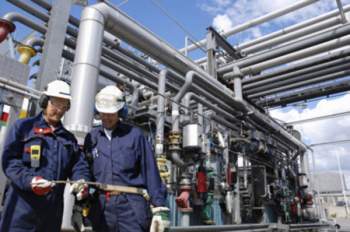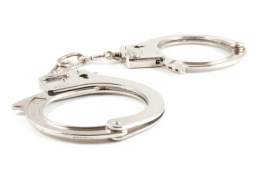
Mine Safety and Health Administration

What is the Mine Safety and Health Administration (MSHA)?
The Mine Safety and Health Administration (MSHA) is an agency of the United States Department of Labor that administers the provisions latent in the Federal Mine Safety and Health Act of 1977 (known as the Mine Act for short). The Mine Safety and Health Administration (MSHA) aims to enforce compliance with mandatory safety standards as a means to terminate all fatal accidents and to reduce the amount—as well as severity—of nonfatal accidents in the nation’s mines. Moreover, The Mine Safety and Health Administration (MSHA) wants to minimize all associated health hazards and promote safety protocol in these dangerous areas.
The Mine Safety and Health Administration (MSHA) carries out the provisions and mandates of the Mine Act at all mineral processing and mining operations in the United States. These entities are required to follow said regulations regardless of their number of employees, size or method of extraction. The Mine Safety and Health Administration (MSHA) is currently run by Joe Main (Mr. Main is the acting Assistance Secretary of Labor for Mine Safety and Health). The entity was formed in 1977 and operates with approximately 1,000 employees.
Brief History of the Mine Safety and Health Administration (MSHA):
In the late 19th century, the United States Congress passed the first federal statute for the means of governing mine safety. This law was a relatively modest piece of legislation that applied only to mines in the United States—the legislation established minimum ventilation requirements at all underground coal mines in the country and banned operations from employing children under the age of 12.
Two decades later, in 1910, The United States Congress established the Bureau of Mines. This new agency, which served in the Department of the Interior, was charged with the responsibility to conduct research and reduce coal mining accidents. This agency; however, was not given inspection authority until 1941.
A decade later, in 1952, The Federal Coal Mine Safety Act provided for annual inspections in certain underground mines and awarded the Bureau limited enforcement powers, including the authority to issue imminent danger withdrawal orders and violation notices.
The Coal Mine Safety and Health Act of 1969 (typically referred to as the Coal Act) was the most comprehensive and stringent piece of federal legislation; passed for governing the mining industry, the act, governed over surface and underground coal mines. This piece of legislation required a bi-annual inspection of every surface coal mine in the United States and four annual inspections at every underground coal mine in the nation. Moreover, the Coal Act substantially increased federal enforcement powers in the coal industry. This piece of legislation also required monetary penalties for all practices that go against the rules latent in the Coal Act—criminal penalties are applied for willful violations. The Coal Act also instituted safety and health standards for all surface and underground mines in the nation. The legislation included specific procedure for the creation of mandatory health and safety standards and provided funds for miners who sustained injuries or contracted a medical condition as a result of negligence or willful violation of these rules.
In 1973, through administrative action, the Secretary of the Interior, created The Mine Safety and Health Administration (MSHA) as a distinct government agency, separate from the Bureau of Mines. The Mine Safety and Health Administration (MSHA) took over the safety and health enforcement functions that were formerly implemented by the Bureau. More recently, in 1977, the United States Congress passed the Federal Mine Safety and Health Act, which is the piece of legislation that governs The Mine Safety and Health Administration’s (MSHA) activities. This piece of legislation amended the Coal Act in various ways and consolidated all federal safety and health regulations of the industry as a whole. The act also expanded the rights of the individual miner and enhanced the protection of these employees from retaliation for exercising said rights.
Modern Regulations Governed By The Mine Safety and Health Administration (MSHA):
The mining industry is regulated by The Mine Safety and Health Administration (MSHA) in the United States. This agency employs roughly 1 safety inspector for every four coal mines in the nation. Underground mines are stringently inspected at least four times per year by these employees. Moreover, individual miners are free to report violations and request additional help or inspections in questionable mines. Individual miners who are concerned about their work safety may not be penalized with any threat that revolves around termination or a loss of employment.
Those accidents or injuries that are deemed immediately reportable by The Mine Safety and Health Administration (MSHA) are:
1. A death that takes place at a mine
2. An injury to an individual at a mine which has a grave potential to precipitate or outright cause a death
3. Entrapment of a person for more than one half hour
4. An unplanned inundation of a mining area by a gas or liquid
5. An unplanned explosion or ignition of dust or gas
6. An unplanned ignition or explosion of an explosive or blasting agent
7. Unplanned fires that are not extinguished within 30 minutes of discovery
8. Unplanned collapses or roof falls at or above anchorage zones in active mines; an unplanned rib fall or roof in an active mine that impedes passage or impairs ventilation
9. A rock or coal outburst that causes a withdrawal of miners or which affects regular mining activities for more than one hour
10. The presence of unstable conditions at vulm banks, impoduments or refuse piles that require emergency action to prevent failure
11. Any damage placed on hoisting equipment in a slope or shaft which endangers individuals or which impedes with the use of equipment for more than one half hour
12. Any event at a mine which causes a bodily injury or death to a person not located at the mine at the time the event takes place.
The Mine Safety and Health Administration (MSHA) authorizes the Centers for Disease Control and Prevention, the National Institute for Occupational Safety and Health to develop suggestions for mine health standards for the agency. The Mine Safety and Health Administration (MSHA) may also administer medical tests or medical surveillance programs for individual miners. This authority enables The Mine Safety and Health Administration (MSHA) to take chest x-rays of injured workers for the detection of black lung disease. Moreover, The Mine Safety and Health Administration (MSHA) may also conduct on-site investigations and certify personal protective equipment on mining sites.



















